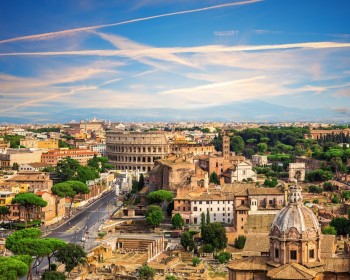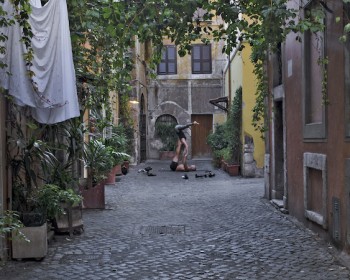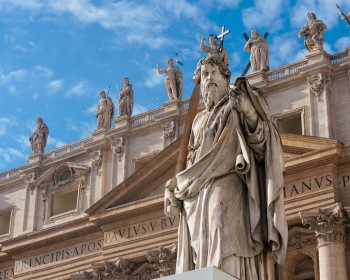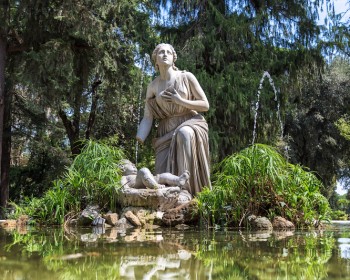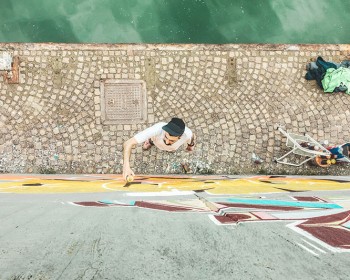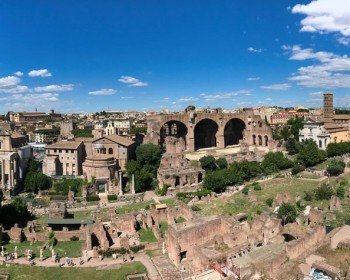When you visit Rome, you expect to visit a plethora of historical sites. You are sure to hear countless tales of gladiators, lions and Emperors as you wander through Ancient Roman ruins- including, of course, the infamous Colosseum. You’ll find yourself at the apex of the Renaissance as you admire Michelangelo’s Sistine Chapel. And you will be immersed in the Baroque culture as you marvel at great works like St Peter’s Square and the Trevi Fountain, getting to know the true masters of the style such as the incomparable Bernini.
In fact, perhaps one of the few historical buildings that don't spring to mind when you think of Rome is a Medieval fortress on the sea. Yet this is exactly what you can see if you travel just 50 minutes North of Rome. Perched on the shore of clear blue waters lies the formidable Santa Severa Castle! The good news… from the spring of 2017 it has opened its doors to the general public again.
A journey through 3000 years of history
Although ostensibly a Medieval fortress, the history of Santa Severa castle actually dates back much further. Thanks to its advantageous location, both strategically placed on the sea and close to springs of fresh water, the Castle seems to have been a point of settlement pretty much since the dawn of time. In fact, the first discoveries in this area date back to the Bronze Age.
In the Etruscan period, Santa Severa became an important seaport. In the Castle walls, you can still see some of the old Etruscan stonework today! In Ancient Roman times, instead, the site went through the diverse changes of being used as a military base, to a trendy area for noble families to build fancy villas on the sea, to being used as a large cemetery. Quite the transformation we think you’ll agree!
In 1068 we find the first written records of the castle. This account documents the donation of the castle and church from the Norman Count, Gerardo di Galeria to the Abbey of Farfa.
The Castle as we know it today, with its formidable rectangular structure and towers on the corners, came into being in the 14th Century. During the 13 and 14th century the Santa Severa Castle was mostly used as a vacation spot for weary Popes looking for some R&R. The castle continued to thrive in the 15th & 16th Century under the Order of the Holy Spirit as an entire village sprawled up around it. Why not try to spot the patriarchal cross, emblematic of the Order’s coat of arms, as you tour around the castle?
Sadly, Santa Severa Castle fell into a long period of disuse until Germans spotted its strategic potential once again and used it as a military base during the Second World War.
From the Bronze Age to World War II, your visit to Santa Severa is guaranteed to be a real case of time travel!
Where did it get its name?
The Castle is named after Saint Severa. The young Christian was martyred on the site along with her two brothers (Calendino and Marco) on 5 June 298 AD, under the Emperor Diocleziano. At the end of the 5th or beginning of the 6th Century an early Christian church was dedicated to Saint Severa on the site. Some of this church, now modernized, can even be seen today in the Piazza della Rocca!
What can I see today?
A strange but wonderful mix between a castle, Medieval village, hands-on museum and organic artisan trading center you can while away a very pleasant time at Santa Severa. The castle is effectively a hands-on museum. Not only can you purchase an audioguide to tour at your own pace, as you wander through the castle’s rooms and grounds you will come across actors putting on little performances, a visual narration of Santa Severa’s rich past. Nothing is ‘off-limits’ in the museum itself and you can physically touch the ancient and medieval artefacts housed inside the rooms. You will see real examples of the old furniture of the castle as well as authentic Medieval costumes to understand how its inhabitants would have dressed.
If you have a head for heights you can climb Castle Santa Severa’s 20 meter tower for spectacular views over the grounds and the sea. If great food and drink are more your thing you can visit the little artisan shop selling locally produced organic produce such as food, fruit juice and even wine. In fact you can round off your visit with a wine-tasting accompanied by local snacks! Its safe to say that there is something for everybody’s tastes at Castle Santa Severa.
The practical bits
The Castle is closed every Monday. Apart from Mondays, it is open the following times:
1 October- 31 March
Tuesday to Friday from 9:30am to 4pm
Saturdays & Sundays from 10am to 7pm
1 April- 30 September
Tuesday to Friday from 9am to 6pm
Saturdays & Sundays from 10am to 7pm
1 July to 31 August
10:30am to 4:30pm (maximum 50 people every hour)
4:30pm to 11:30pm (unlimited)
Please do be aware that the tickets office closes 1 hour before closing time though!
The entrance ticket costs 8 Euros, 6 Euros for children between 6-14 years old. Under 6s go free!
To climb the tower of Saracena there is a little fee of 3 Euros per person to pay on site. To climb the tower kids must be at least 7 years old.
You can purchase an audioguide in English or Italian for 5 Euros per person.
You can also enjoy a wine-tasting, again to purchase on site. The price is 8 Euros per person and includes local wines and snacks. Your little ones can enjoy local snacks with an organic fruit juice for 6 Euros.
To get to Santa Severa you can get either a bus or train from Rome. Both go to Civitavecchia and you should get off at the Santa Severa stop. Of course, for maximum comfort and flexibility (after all you are on vacation!) we suggest you book one of our English-speaking private drivers with Mercedes car or minivan.
You might not know that Santa Severa is actually just 15 minutes from Civitavecchia Cruise Port and 30 minutes from Fiumicino Airport. Chances are you will be needing transport to one of these two during your stay in Rome. Why not contact our booking staff to see how you can combine a private transfer with a trip to Santa Severa Castle? It’s guaranteed to make an otherwise dull journey unforgettable.



